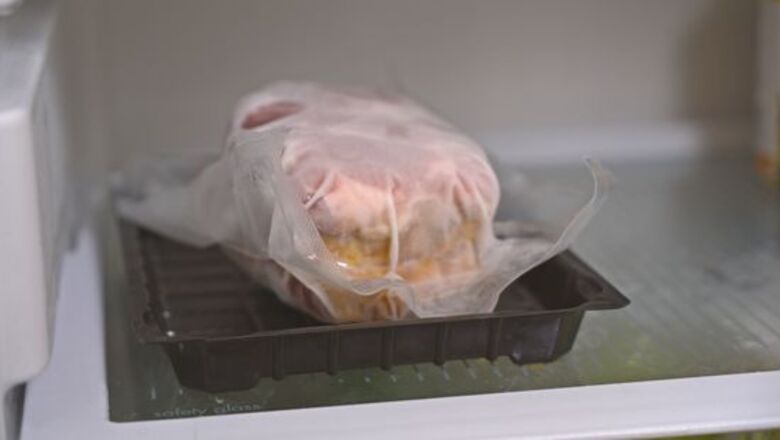
views
Thawing the Ham Safely
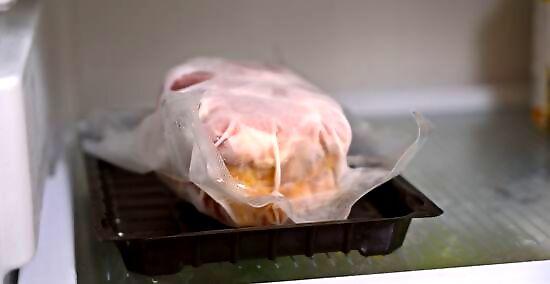
Let your ham thaw in the refrigerator if time permits. This is the safest method of thawing ham, but also takes the most time. Put the frozen ham in a rimmed pan or on a baking sheet to catch any drips that occur during the thawing process. Place the ham in its container on the lowest shelf of your fridge. Thawing ham in the fridge takes about 4 to 6 hours per 1 pound (0.45 kg). If the ham is larger than 10 to 11 pounds (4.5 to 5.0 kg), it could take up to 7 hours per 1 pound (0.45 kg) for it to thaw. Allow 2-3 days to thaw a ham of 10 pounds (4.5 kg) in the refrigerator. After your ham has thawed in the fridge, it can remain refrigerated for 3-5 days before you cook it. You can also freeze it again if you don’t cook it in that time frame.
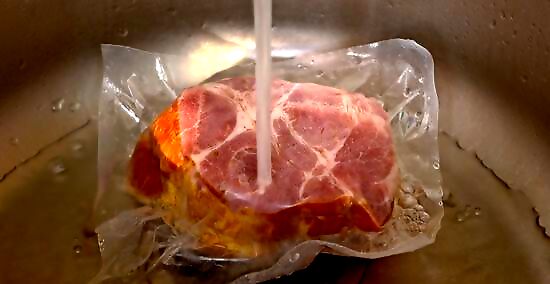
Thaw the ham in cold water if you’re more pressed for time. Wrap the ham securely in an airtight plastic bag. Plug the sink, and place the ham in it. Then fill the sink with cold water. Drain it every half hour and replace the water to make sure it stays cold enough. Allow about 30 minutes per 1 pound (0.45 kg) of ham to thaw. Make sure the water is cold, not warm or hot. If the water isn’t cold, the outside of the ham could reach temperatures of 40 °F (4 °C) before the inside of the ham is thawed. Temperatures this high can cause bacterial growth and food poisoning. Cook the ham immediately after you’ve thawed it in cold water. It cannot be frozen again with this method.
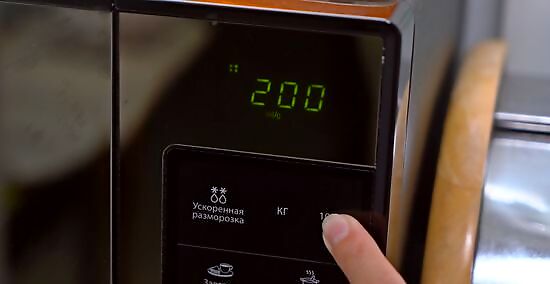
Use the microwave to thaw ham as a last resort. Put the microwave on its defrost setting. Consult your microwave’s instruction manual for the correct defrosting time based on the weight of your ham. This method is not ideal for larger pieces of meat. The meat will cook unevenly as the outside begins cooking before the inside is thawed. Some parts may become dry and overcooked. Avoid thawing meat over 2 pounds (0.91 kg) in the microwave. After thawing in the microwave, ham should be cooked immediately. Do not refreeze it.
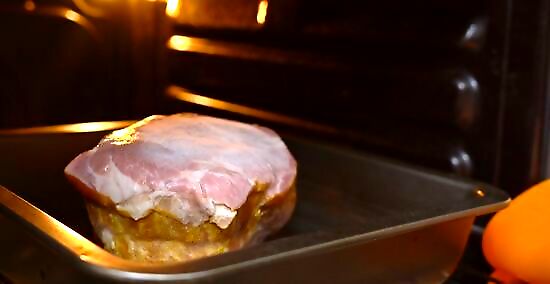
Skip the thawing altogether to save time. You can cook a frozen ham without thawing it first. Allow extra cooking time. It will take approximately 50% longer to cook a frozen ham than a thawed one, depending on its size.
Baking Frozen Ham in the Oven
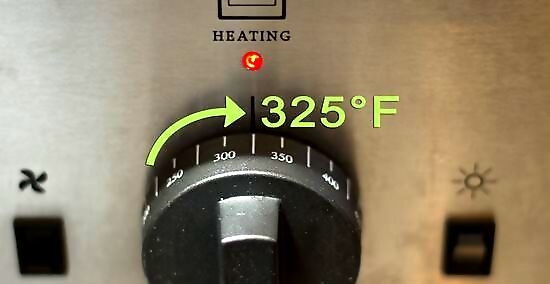
Set the oven to 325 °F (163 °C). Whether your ham is pre-cooked or uncooked, it needs to be heated at the same temperature in the oven. Cooked hams should be reheated to an internal temperature of 150 °F (66 °C). Uncooked hams need to be cooked to an internal temperature of 145 °F (63 °C). A pre-cooked ham of any cut can be eaten cold. However, it will probably taste better if you reheat it.
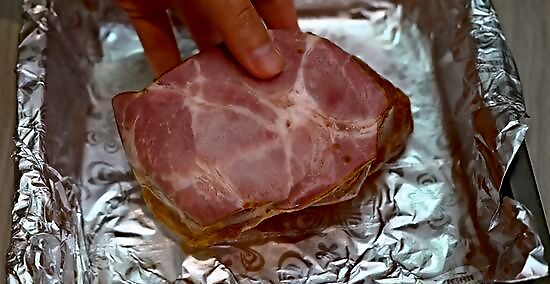
Place the ham in a roasting pan with aluminium foil. Put the foil in the bottom of the roaster first. Set the ham on top of it, with the fattiest side facing up. Lining the bottom of the roaster with foil makes it easier to clean after.
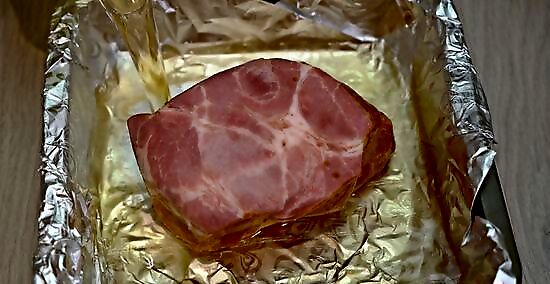
Add about ⁄2 cup (120 mL) of liquid and cover the ham tightly with foil. The liquid will help keep your meat moist. Don’t put excessive amounts, though. Fat will also melt off the ham during the cooking process and moisten it. For the liquid, you can use water, fruit juice, cider, wine, or even cola. Don’t be afraid to experiment. Make sure that the foil covering the ham is tightly sealed to lock the moisture in.
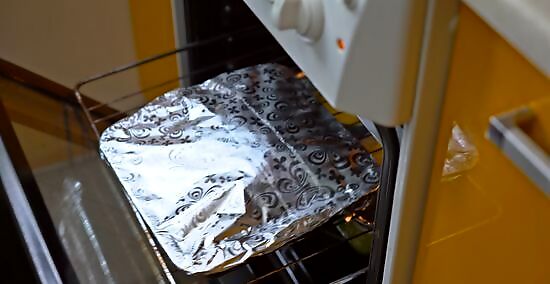
Put the ham in the oven and cook it for the right amount of time. The length of time your ham needs to cook varies depending on the type of ham and the weight. Use a meat thermometer to check the internal temperature of the ham. Cook a thawed, whole ham for about 18-20 minutes per 1 pound (0.45 kg). Cook a thawed, half ham for about 22-25 minutes per 1 pound (0.45 kg). Remember that it takes approximately 50% longer to cook a frozen ham than a thawed one.
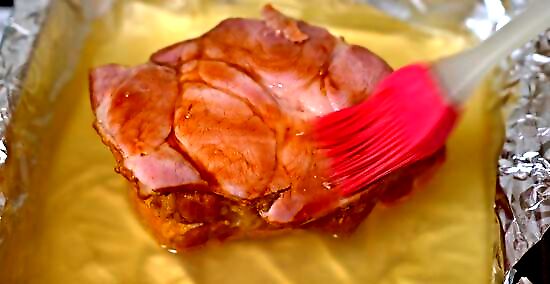
Glaze the ham when its internal temperature reaches 135 °F (57 °C). Remove the foil cover from the ham. Glaze the ham generously with a basting brush using a glaze of your choice. There are many different delicious glaze recipes you can try. The basic components usually include a spicy ingredient, often mustard, with something sweet, like brown sugar, honey, marmalade, juice, sherry, or maple syrup. You can also add other spices and flavors, like cloves, garlic, or ginger. Aim for a thick glaze with the texture of paste so it doesn’t just slide off the ham. Adding a dry ingredient like flour or mustard powder helps thicken the glaze.
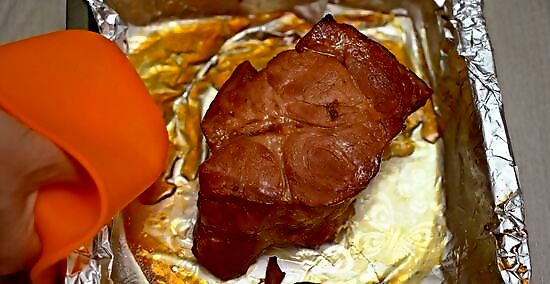
Increase the oven temperature to 400 °F (204 °C). Put the ham back in the oven. Leave it uncovered. Bake until the glaze looks burnished. This should take approximately 15-20 minutes.
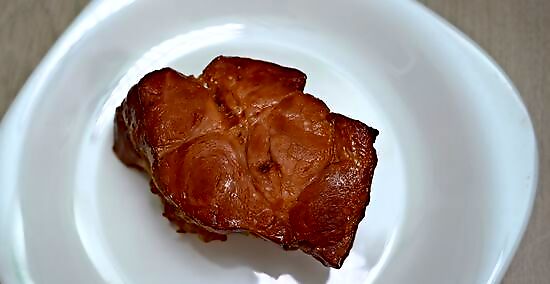
Remove the ham when its temperature is 135 to 140 °F (57 to 60 °C). This is a few degrees lower than the recommended minimum internal temperature for doneness. Let the ham rest for 10-15 minutes. It will continue cooking during this time until it reaches the proper temperature. Removing the ham before it’s fully heated prevents the meat from overcooking. Before you serve it, double check with a meat thermometer that the internal temperature of your ham is at least 145 °F (63 °C) after the resting period.
Cooking Ham in a Pressure Cooker
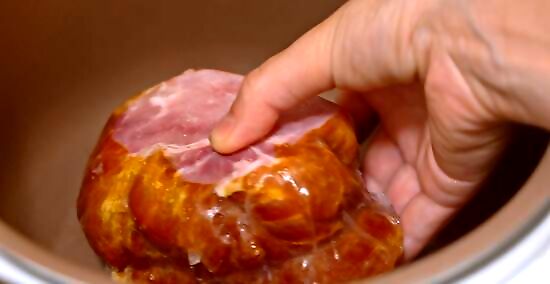
Place frozen ham in the pressure cooker. Put it on the trivet. Make sure it's facing down to get the best flavor. Make sure your piece of meat fits in your pressure cooker. Don't try cooking meat that's too thick in the pressure cooker. You'll have to leave it in so long that the outside will be totally overcooked while the inside is barely cooked at all.
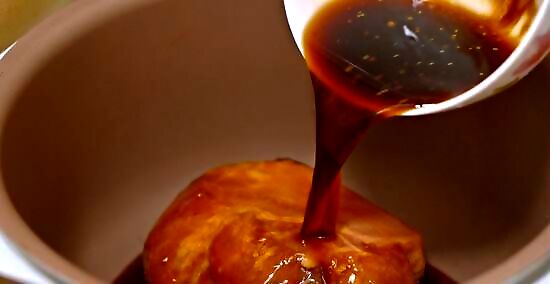
Pour sauce or glaze over your ham. Sweet sauces go very well with ham. Be creative with your ingredients. Try a mixture of maple syrup, brown sugar, and crushed fruit or fruit juice, like pineapple.
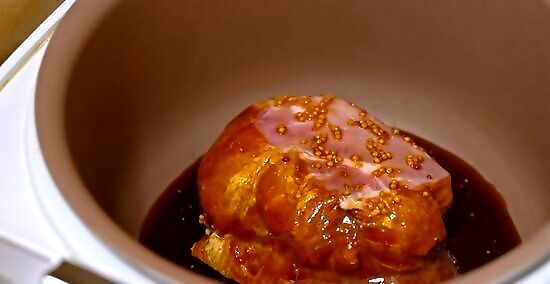
Secure the lid and cook on high pressure for about 35 minutes. Choose 'manual' setting and then adjust the time to 35 minutes. Let the pressure release before opening your pressure cooker. Remember that it takes longer to cook frozen meat than thawed meat. These instructions are based on cooking a small frozen ham. Your recipe might assume the ham is thawed, though, so adjust the recipe's time accordingly. Cook frozen meat for about 50% longer than thawed meat.
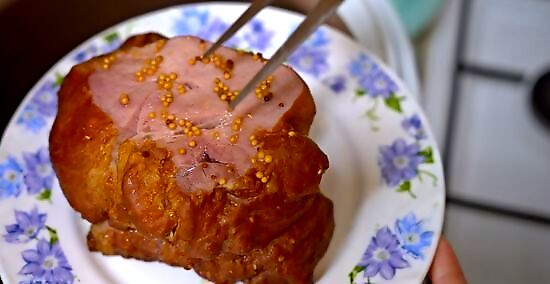
Take out the ham and thicken your sauce. Whisk together 1 tablespoon (15 mL) of cornstarch and 2 tablespoons (30 mL) of cold water until the mixture is smooth. Put your pressure cooker on saute setting and stir the mixture into the liquid inside. You can also thicken sauce with a slurry of butter and flour instead of cornstarch. Melt 1 tablespoon (15 mL) of butter on a plate in the microwave. Whisk it with about 1.5 tablespoons (22 mL) of flour. Add this to the liquid and stir.
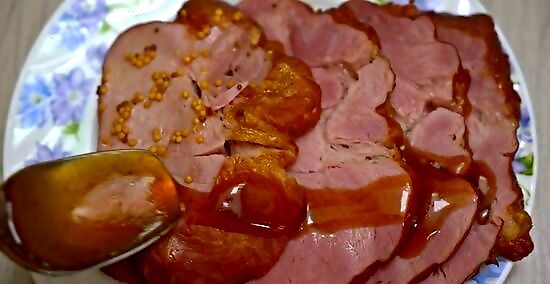
Bring the sauce to a boil until it's thick. Continue stirring until your sauce has reached the consistency you like. Turn off your pressure cooker and pour the sauce over your ham. Always check the internal temperature of your ham with a meat thermometer before eating it. The temperature should be 145 °F (63 °C).















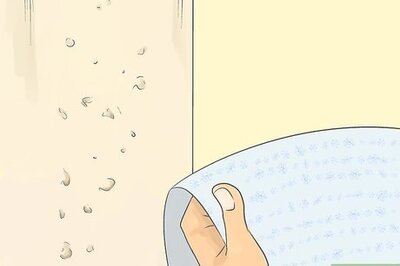


Comments
0 comment